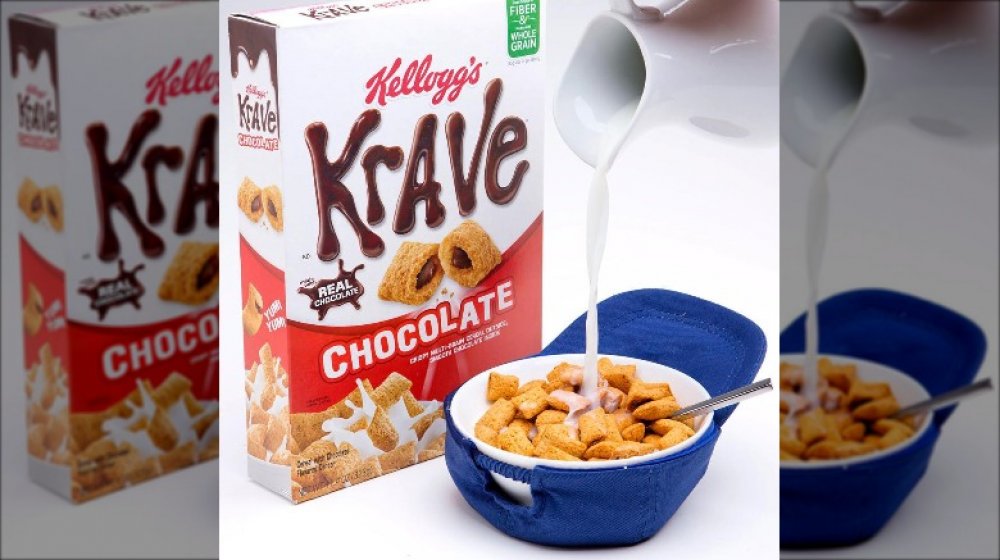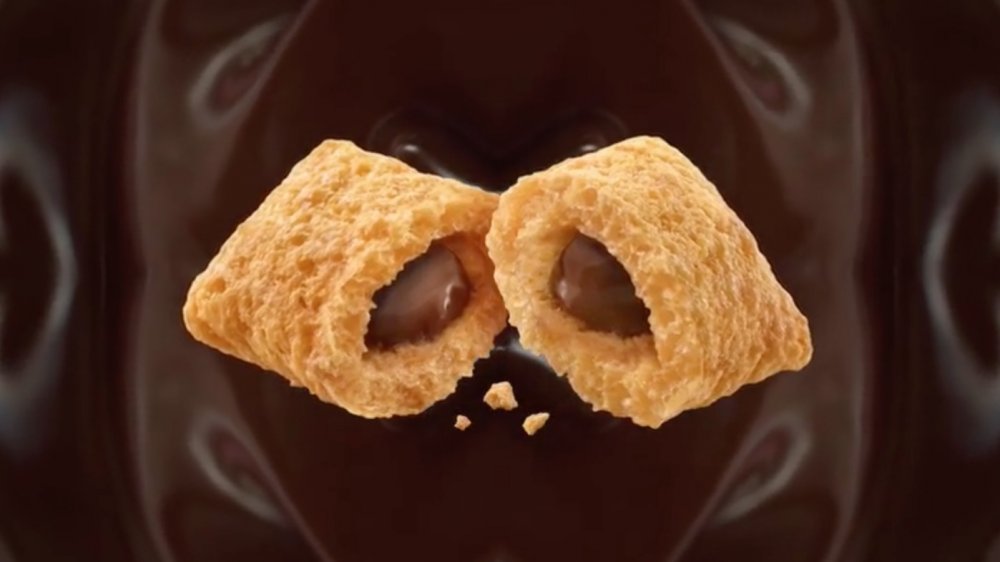The Untold Truth Of Kellogg's Krave
The Europeans might have their muesli, but Americans have their breakfast cereal, which swings between healthy and downright hedonistic, depending on what's in the box. The Froot Loops, Trix, and Frosted Flakes of today bear little resemblance to the broken bits of baked graham flour dough that James Caleb Jackson first invented for his medical sanatarium (which he called "granula") back in 1863. Another version, which was renamed granola, was invented by surgeon John Harvey Kellogg for his Michigan health spa, and the rest, as they say, is history (via The New York Times).
Kellogg's Krave is as far from James Caleb Jackson's vision of "granula" as it gets. Before it hit American shelves, Cereal Guru says a similar breakfast food made its debut in Israel back in 1994, where it was called Kariot (which means pillow or cushion in English). The chocolate-filled cereal pillows then made their way to Europe, where it was consumed in the United Kingdom, France, and Germany, before it finally reached American shores in 2012.
Kellogg's Krave has plenty of sugar
Krave is made with both whole wheat and whole grain flours, and conceals a smooth, sugary chocolate center. A serving size of 53 grams contains 220 calories, of which 8 percent is fat, 8 percent is sodium, and 15 percent is carbohydrates. It also contains 35 percent of the RDA for Iron, 80 percent of RDA for Thiamin, and other vitamins and minerals like vitamin B6 and folate (via Kellogg's).
While Krave is marketed as being made with whole grain and as being a good source of fiber, Cereal Guru says the breakfast cereal is not as healthy as it might seem. Each serving of Krave contains about 19 grams of sugar, derived from what Cereal Guru lists as "sugar, brown sugar syrup, and chocolate." And while Kellog's Krave might make for a delicious breakfast, its nutritional benefits, thanks to its high sugar content, are questionable.

